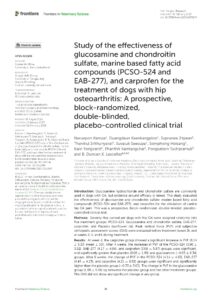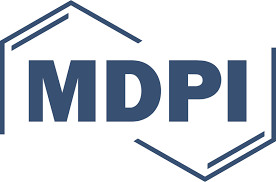 Filter Studies by Smart Tags
Filter Studies by Smart Tags
Bone & JointCardiovascularCase Study & ProceedingCatDogEAB 277™EfficacyExotic PetImmunologyNeuro & BehaviorOphthalmologyOralRabbitRenalRespiratoryRodentSafetySkinUTI
Antinol® Latest Studies
Sorted by recent
Updated Study Topics
New researches and publications related to PCSO-524® and its result in clnical test submitted by veterinarians on the global conferences every year and the data keeps growing with more studies conducted


Where it all started
In 1997, the first study was published.
The effectiveness of PCSO-524® (found in Antinol® and Lyprinol®) in this study has driven the medical community toward the alternative treatment aimed for the better quality of life for pets.
The Whitehouse Study :
Anti-inflammatory activity of a lipid fraction (lyprinol) from the New Zealand green-lipped mussel
A lipid-rich extract, preparared by supercritical fluid extraction of fresh stabilized mussel powder (Lyprinol), showed significant anti-inflammatory (AI) activity given therapeutically and prophylactically po to Wistar and Dark Agouti rats developing either (a) adjuvant-induced polyarthritisor (b) collagen(II)-induced autoallergic arthritis, with ED50≤15 mg/kg; c.f. naproxen≥25 mg/kg or various therapeutic oils (flaxseed, evening primrose, fish)≥1800 mg/kg given orally.
Lyprinol showed little or no activity in acute irritation assays (carrageenan, kaolin, histamine) indicating it is not mimicking rapid-acting NSAIDs.
The Effectiveness of Marine Based Fatty Acid Compound (PCSO-524) and Firocoxib in the Treatment of Canine Osteoarthritis

This randomized double blinded study included 79 mixed breed dogs that had hip and/or stifle OA with X-ray confirmation. Outcome measures were changes in Kinetic force plate gait analysis-Peak Vertical Force (PVF), the Orthopedic Assessment Score (OAS), Canine Brief Pain Inventory score (CBPI), and serum prostaglandin E2 concentration (PGE2).
The results of the study suggest that within each group of a combination (PCSO-524 and Firocoxib), PCSO-524, Firocoxib showed the significant improvement of weight bearing ability but not in the comparison between.
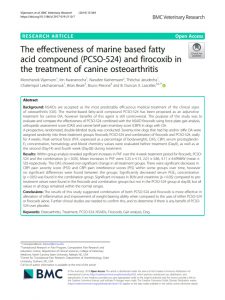

The Effectiveness of Marine Based Fatty Acid Compound (PCSO-524) Alone and Combined with Firocoxib in the Treatment of Canine Osteoarthritis

(VOS conference, March 2018)
This randomized study involved 31 mixed breed dogs with x ray confirmed OA of stifle joint. They were split into 2 groups for four weeks of treatment.
The results showed a non-significant effect of the treatment on the adjusted Peak Vertical Force (PVF) value (p=0.447) among the 2 treatment groups.
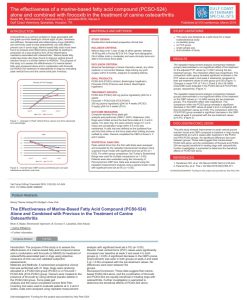
![]()
Anti-inflammatory activity of
a lipid fraction (lyprinol) from the
NZ green-lipped mussel


Antinol® EAB-277® – The Executive Summary

Antinol® Rapid is a potent synergistic blend of 2 marine lipid extracts chosen for their unique enhancement formula called EAB-277®.
EAB-277® is the key active ingredient of this advanced formula formulated to promote optimal benefits through its synergistic efficacy contains > 90 free fatty acids full spectrum of Omega 3 including ETA, EPA, DHA as well as other key Polyunsaturated fatty acids (PUFAs) and antioxidants.
The two marine lipids used in Antinol® Rapid are proprietary and exclusively produced. The exact combination of 30mg lipid fractions from Perna canaliculus (New Zealand green lipped mussel) and 20mg high phospholipid krill oil is the result of years of research combining and isolating lipid groups and essential fatty acids to find the optimal nutrient synergy.
EAB-277®’s proprietary high phospholipid krill oil is high in polar lipid enrichment which enhances bioactivity “Potency” of this marine oil blend formula as a result of proven efficacy.
The Antinol® Rapid EAB-277® blend has been proven via laboratory tests to be more effective than either of the individual lipids alone in inhibiting inflammation markers such as nitric oxide, TNFα, and IL-6.


Join the Community of Veterinarians and Researchers
Register for our e-newsletters for all updates of PCSO-524® related studies from all over the world (USA, Europe, and Asia)







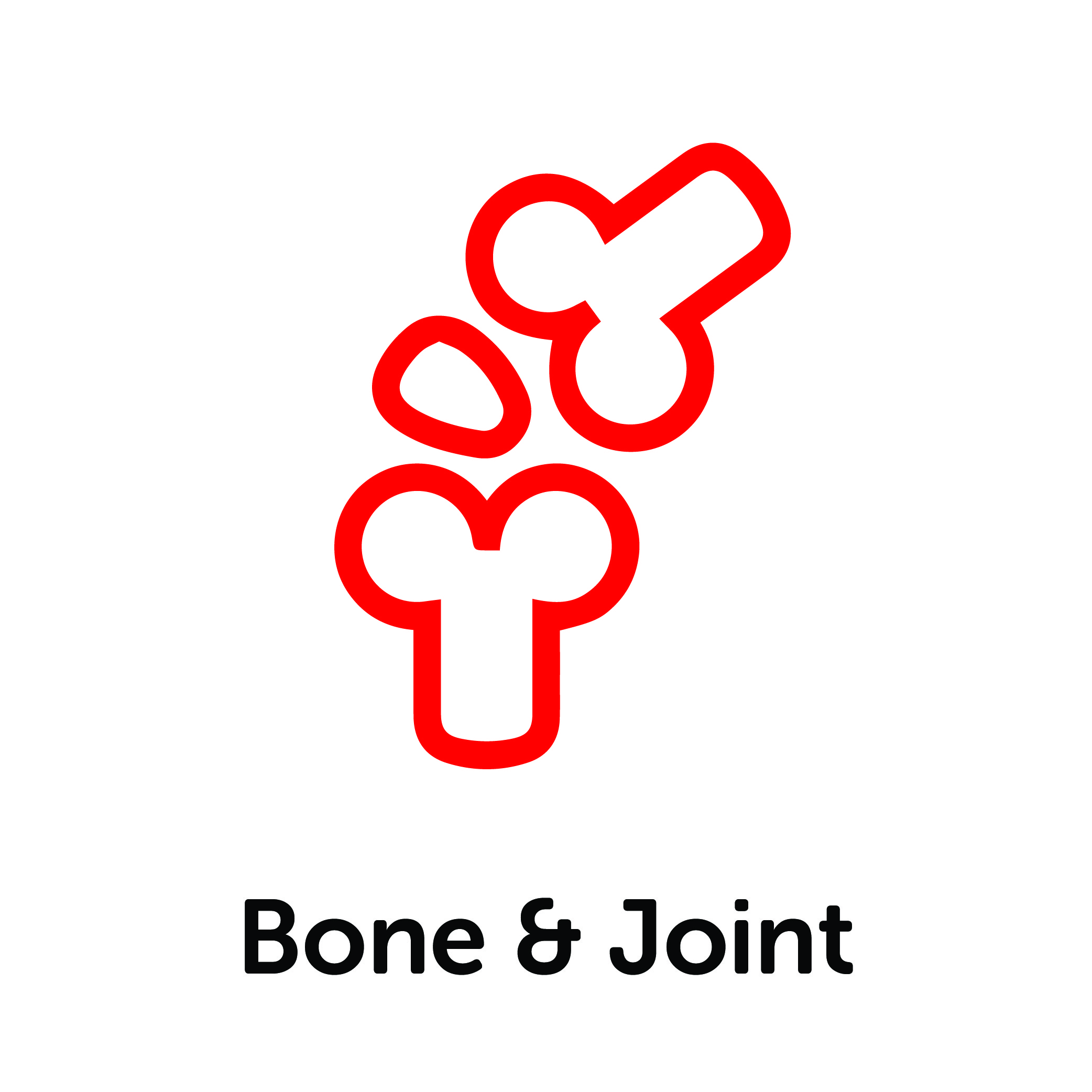
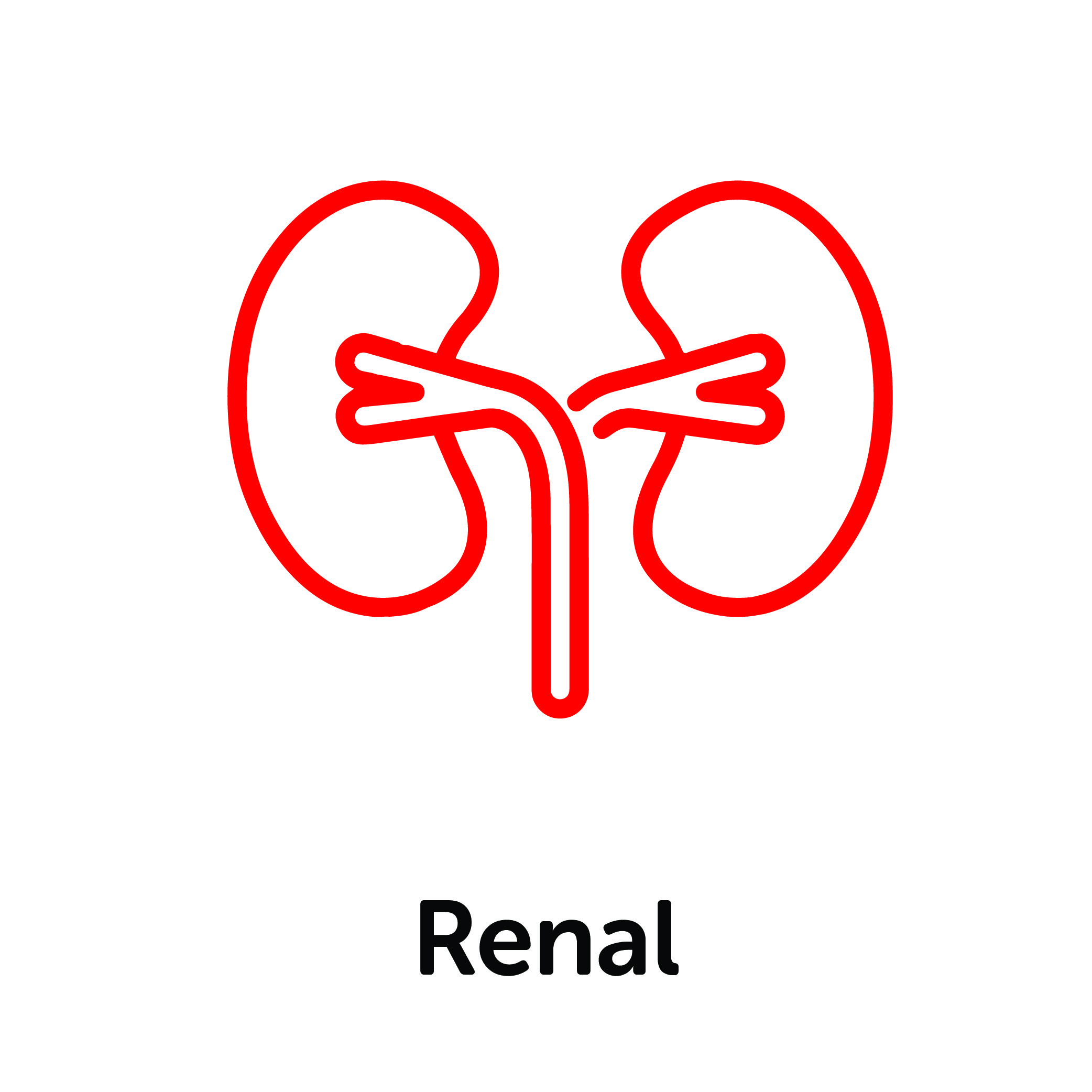


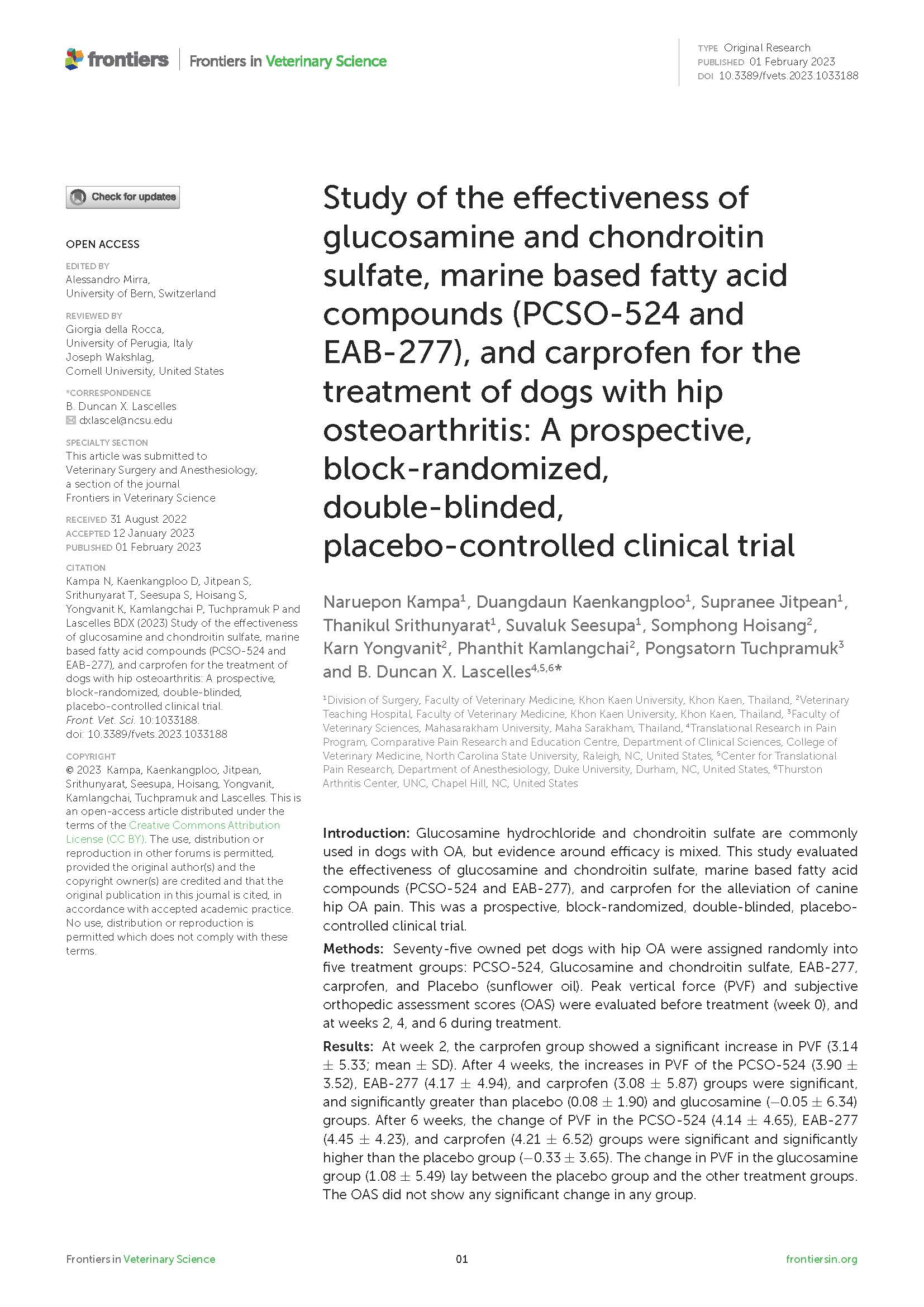

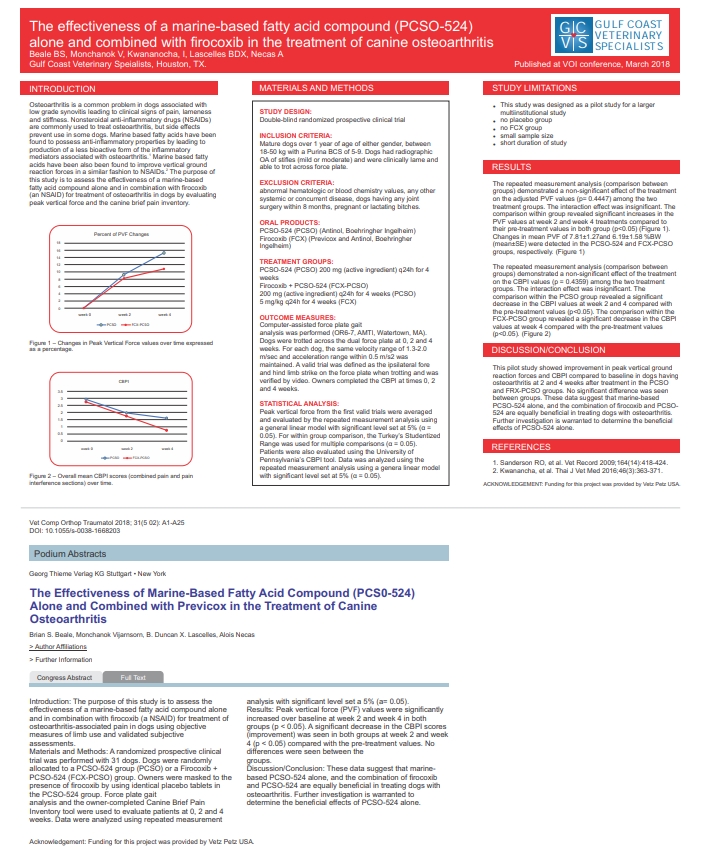


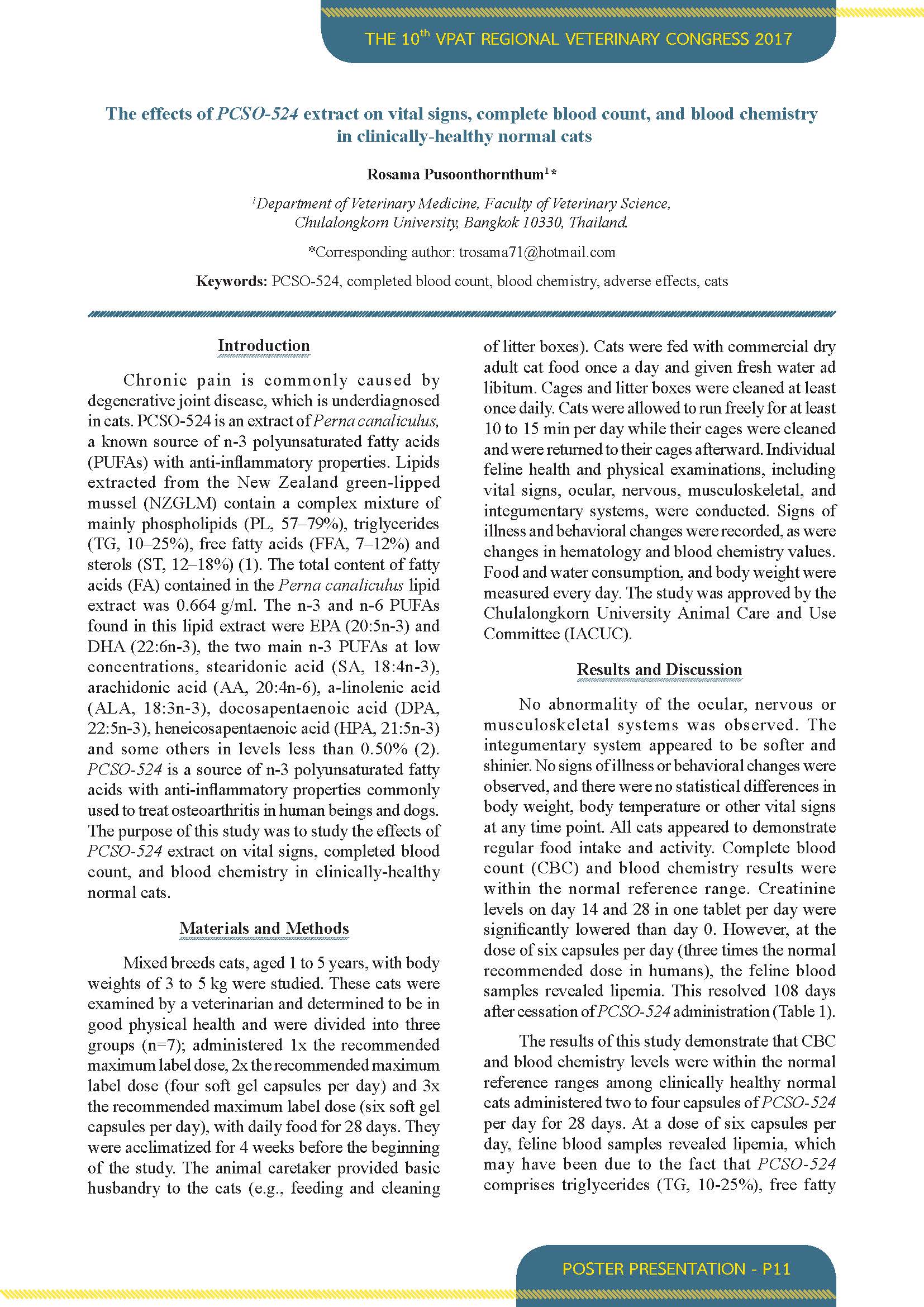








 Authors:
Authors:

